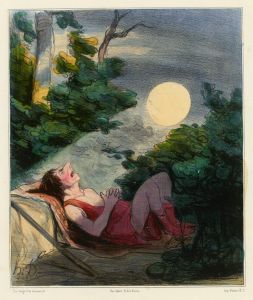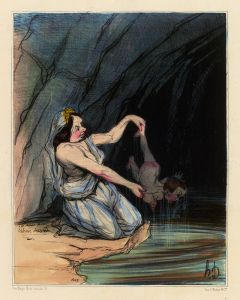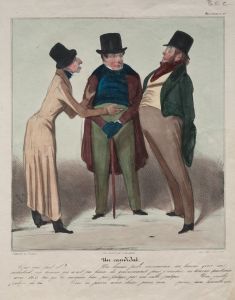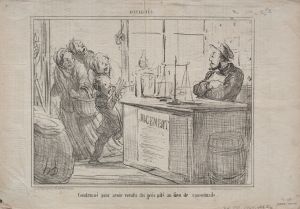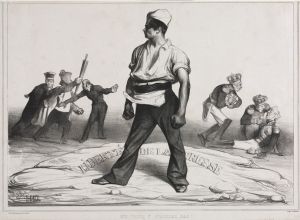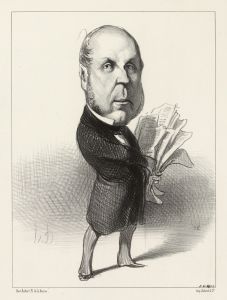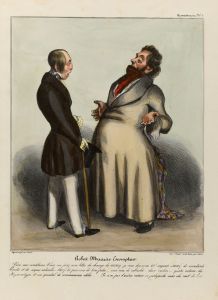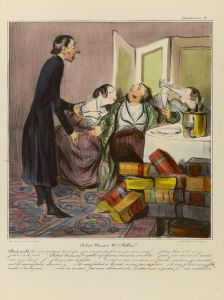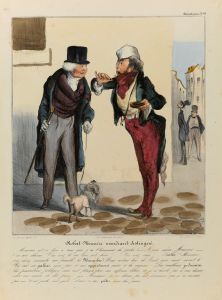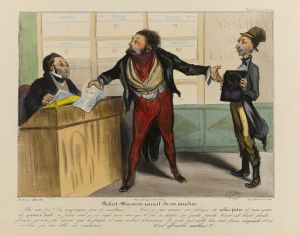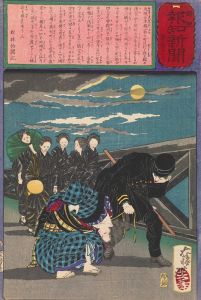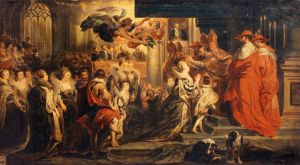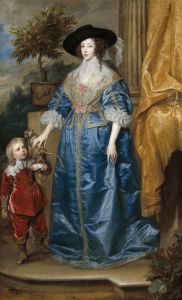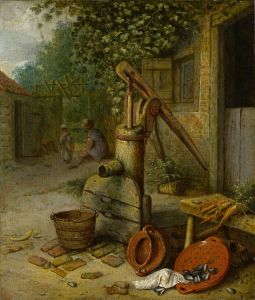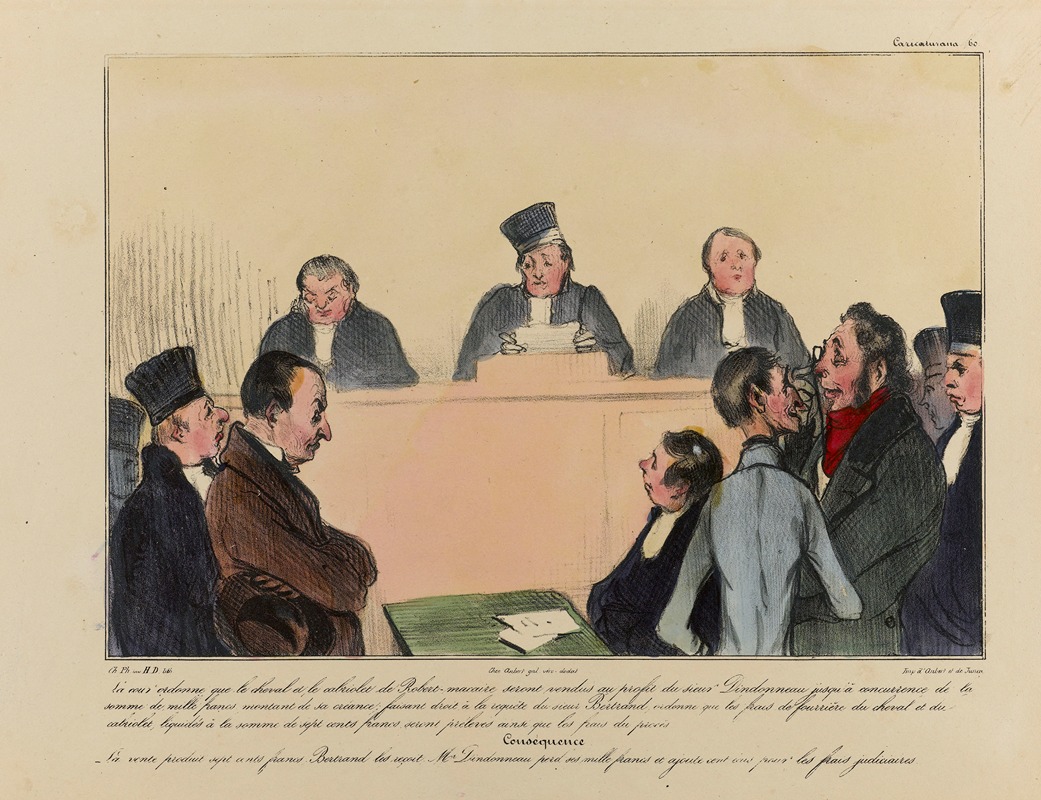
La cour ordonne que le cheval et le cabriolet de Robert Macaire seront vendus au profit du sieur Dindonneau
A hand-painted replica of Honoré Daumier’s masterpiece La cour ordonne que le cheval et le cabriolet de Robert Macaire seront vendus au profit du sieur Dindonneau, meticulously crafted by professional artists to capture the true essence of the original. Each piece is created with museum-quality canvas and rare mineral pigments, carefully painted by experienced artists with delicate brushstrokes and rich, layered colors to perfectly recreate the texture of the original artwork. Unlike machine-printed reproductions, this hand-painted version brings the painting to life, infused with the artist’s emotions and skill in every stroke. Whether for personal collection or home decoration, it instantly elevates the artistic atmosphere of any space.
Honoré Daumier, a renowned French artist, caricaturist, and printmaker, created the lithograph titled La cour ordonne que le cheval et le cabriolet de Robert Macaire seront vendus au profit du sieur Dindonneau as part of his satirical series featuring the character Robert Macaire. This work was published in 1836 in the Parisian newspaper Le Charivari, a publication known for its political and social satire during the July Monarchy (1830–1848). The lithograph is one of many in the series Les Robert Macaire, which Daumier produced in collaboration with the writer Charles Philipon.
The character Robert Macaire, originally from a 19th-century French melodrama, was repurposed by Daumier and Philipon as a symbol of greed, corruption, and opportunism in bourgeois society. Through this series, Daumier used Macaire to critique the moral and ethical shortcomings of the middle and upper classes, as well as the legal and financial systems of the time. The series often depicted Macaire engaging in fraudulent schemes or exploiting others for personal gain, reflecting broader societal concerns about dishonesty and exploitation.
In this particular lithograph, the title translates to "The court orders that the horse and cabriolet of Robert Macaire will be sold for the benefit of Monsieur Dindonneau." The scene humorously portrays a legal judgment against Macaire, likely as a result of his unscrupulous dealings. The imagery and accompanying text highlight the absurdity and hypocrisy of certain legal and financial practices, a recurring theme in Daumier's work.
Daumier's lithographs were widely appreciated for their sharp wit and incisive commentary on contemporary issues. His ability to combine humor with pointed social critique made him one of the most influential satirists of his time. The Les Robert Macaire series, including this lithograph, remains a significant example of 19th-century French caricature and continues to be studied for its artistic and historical value.
The original lithograph is part of Daumier's extensive body of work, which includes thousands of prints, drawings, and sculptures. Many of his works, including pieces from the Les Robert Macaire series, are preserved in major art institutions such as the Louvre in Paris and the Metropolitan Museum of Art in New York.





